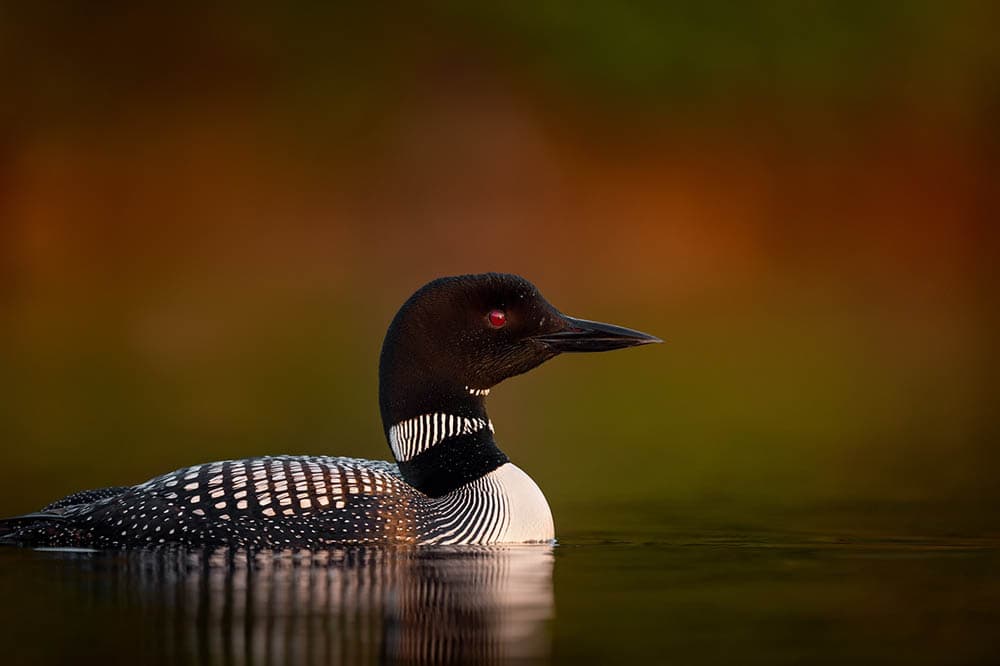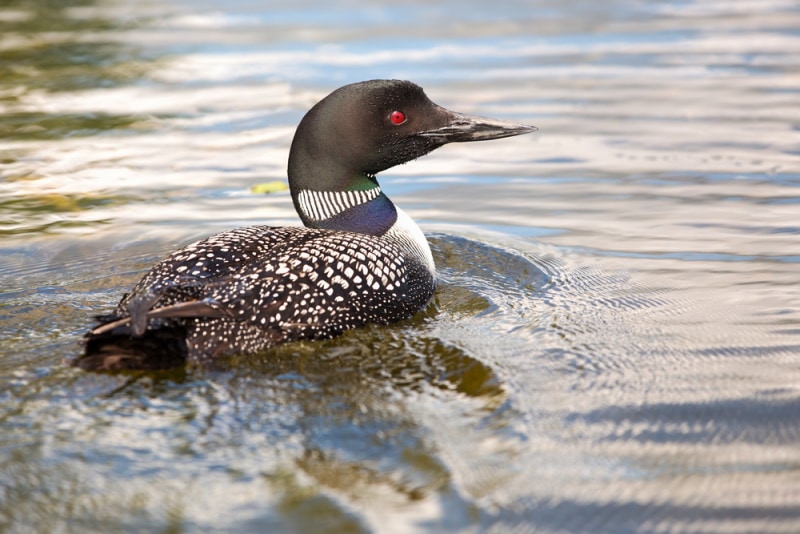What Is Minnesota’s State Bird? How Was It Decided?
Last Updated on

| Length | 28–35 inches |
| Weight | 8–12 pounds |
| Wingspan | Up to 60 inches |
| Age at Sexual Maturity | 2–3 years |
| Lifespan | Up to 9 years |
| Conservation Status | Least concern |
The selection of Minnesota’s state bird, the Common Loon, was a no-brainer to anyone who has heard the plaintive calls of this striking waterfowl species. After all, water and loons are synonymous in the Land of 10,000 Lakes. The Common Loon (Gavia immer) is one of 246 species recorded by the Minnesota Biological Survey. However, the Minnesota Ornithologists’ Union has documented an additional 23 birds, bringing the total to 269.
Many states recognize different animals, plants, or other entities that resonate with their histories. Minnesota also has a state fish, tree, and mushroom. It even has an official muffin—blueberry, for those wondering. Minnesota decreed the Common Loon as the state bird on March 13, 1961, in the Minnesota Statutes 1961 section 1.145. It was revised in 1984 and again in 2021.

Natural History of the Common Loon
The Common Loon is part of the order Gaviiformes and the family Gaviidae. There are five species in the genus Gavia. It is most closely related to the Yellow-Billed Loon (Gavia adamsii). The latter was last reported in the state in 2005. Two other species that visit the state are the Pacific Loon (Gavia pacifica) and Red-Throated Loon (Gavia stellata).

Characteristics
The Common Loon may look like a duck, but it’s a different animal altogether. It’s an excellent flyer and swimmer, able to dive down to 250 feet and stay submerged for up to 5 minutes. The bird isn’t nearly as stealthy on land because of the position of its webbed feet, which don’t support its body weight well. You’ll only see them on land during the breeding season.
The bird has a black head with piercing red eyes and a white chest separated by a collar of white and black colors. Females and males are similar, although the latter is somewhat larger than the former. Other than the other species of its genus, the only bird that comes close to looking like the Common Loon is the Red-Necked Grebe (Podiceps grisrgena).
Behavior
The Common Loon has many behaviors that make it endeared by birdwatchers. We’ve mentioned its calls, particularly its distinctive yodeling. Loons use this vocalization to define their territories. Mated pairs will wail back and forth to each other to signal their location. They also use it to communicate with their young.
Loons usually vocalize at night, which gives these calls a haunting sound, especially when heard on a dark forested lake. They hunt by sight, diving deep to find fish, crustaceans, and other aquatic organisms.
Loons are quite elusive, particularly during breeding when they are most vulnerable. They often build nests at inaccessible places, such as island shorelines. They also tend to avoid areas with a lot of human activity. Females lay one to three eggs after breeding. While the chicks can swim in as little as 2 days after hatching, they stick close to their parents, sometimes hitching a ride on their mom’s back.

Habitat
The Common Loon lives in the northeastern portion of Minnesota. It lives in wetlands and large freshwater lakes, preferably with clear water to help them hunt. This bird also lives in the northern United States and in Canada, where it is named the provincial bird of Ontario. Some loons’ range also extends to Greenland, Iceland, and the western shores of Europe.
The loon is a migratory bird that leaves its breeding territory relatively early in September. It will spend winters in the Gulf of Mexico and along the southern coast of the Atlantic Ocean. The Minnesota Department of Natural Resources (DNR) estimates the population at about 12,000, making it the largest of the lower 48 states.

Conclusion
It’s easy to see why Minnesota chose the Common Loon as its state bird. It is a quintessential symbol of nature and wildlife in the north. Its striking appearance and excellent diving skills make it a one-of-a-kind species. Seeing and hearing this magnificent bird is an experience you won’t soon forget.
Featured Image Credit: Ray Hennessy, Unsplash
About the Author Chris Dinesen Rogers
Chris has been writing since 2009 on a variety of topics. Her motto with all of her writing is “science-based writing nurtured by education and critical thinking.” Chris specializes in science topics and has a special love for health and environmental topics, and animals of all shapes and sizes.
Related Articles:
What Is the Best Binocular Magnification for Hunting? Optical Features Explained
10 Types of Hummingbirds in Arkansas (With Pictures)
8 Types of Hummingbirds in Nebraska (With Pictures)
5 Types of Hummingbirds in Idaho (With Pictures)
3 Types of Hummingbirds in Mississippi (With Pictures)
8 Types of Hummingbirds in Kansas (With Pictures)
5 Types of Hummingbirds in West Virginia (With Pictures)
5 Types of Hummingbirds in Ohio (With Pictures)
